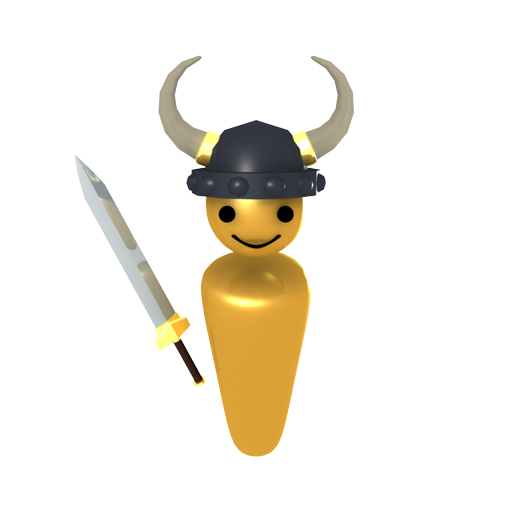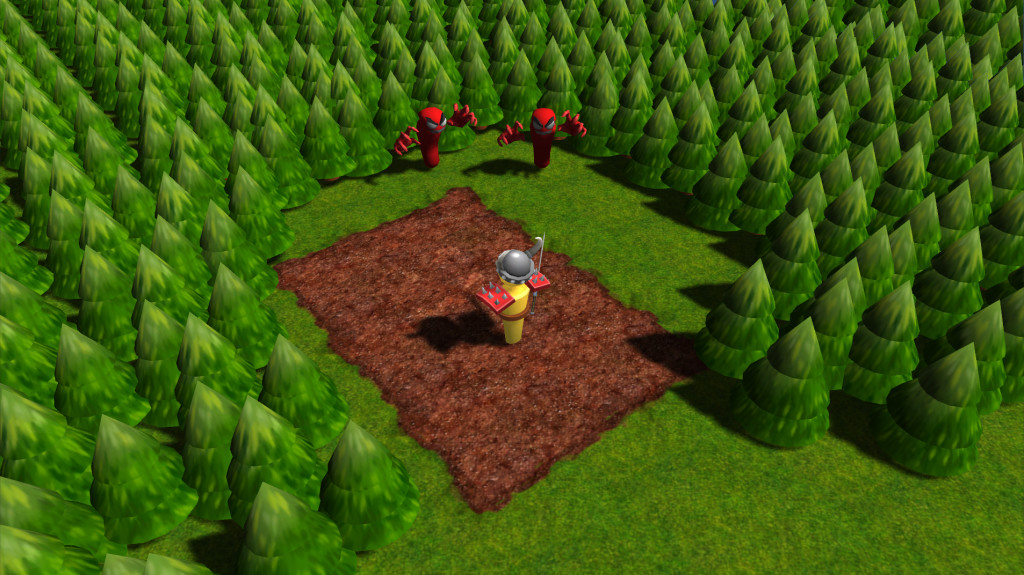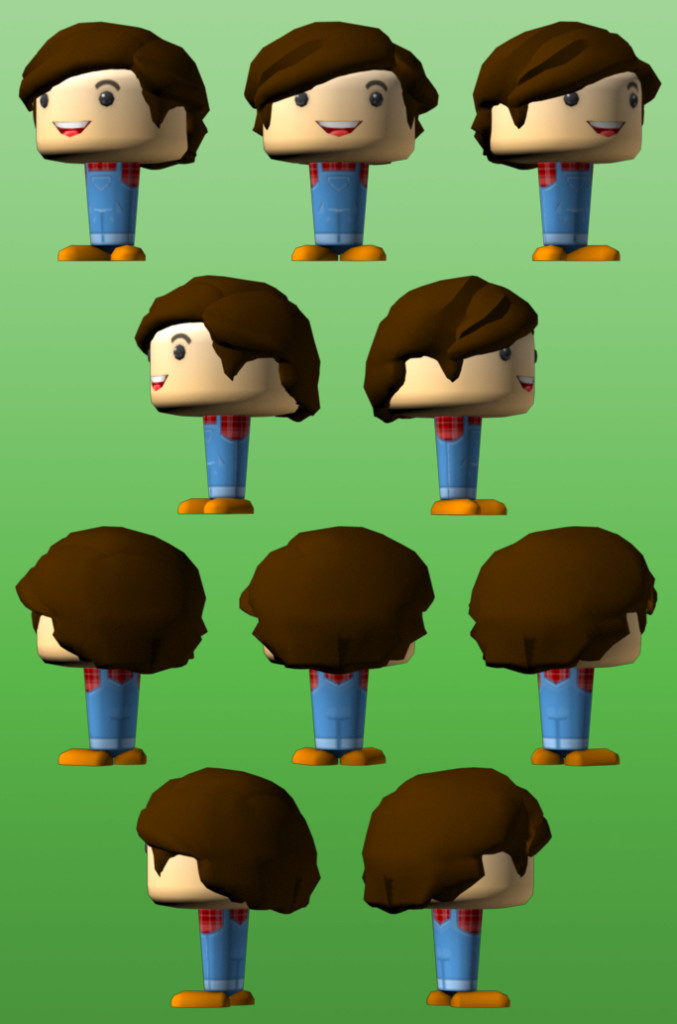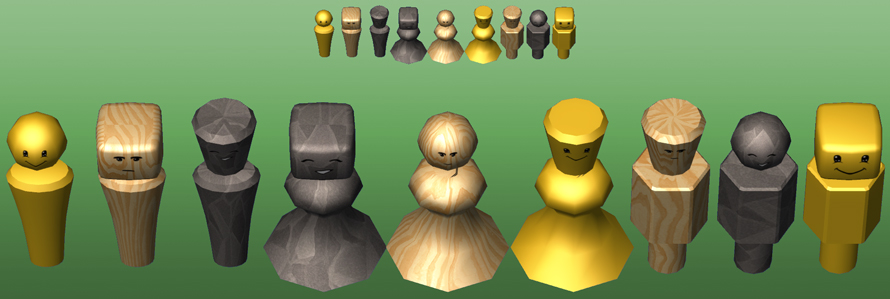Stash will make you fall in love with MMORPGs again.
When MMOs first became a thing, there was enormous excitement. They were going to totally change gaming and society. Sadly, the excitement faded and MMOs quickly fell into some bad habits and clone-ism. With Stash, we are hitting the reset button on that. We are re-imagining the genre and bringing back the magic.
1) Turn based combat.

This is one of the most immediately obvious differences between Stash and most MMOs. It is time to shake things up and have an MMO where tactics and strategy play a bigger role in combat.
2) Death to Bind on Pickup.

Bind on Pickup (BoP) is one of the worst concepts ever invented in MMOs and video games in general. It is incredibly anti-social. It is anti-community. It is anti-market. Basically, all the things that make MMOs special are negatively impacted by the concept of BoP.
In the history of RPGs, one of the most basic ways you could help other people was to give them an item that would help them out. BoP kills this. Sharing items is the MMO equivalent of people breaking bread and sharing meals together. With very few exceptions, BoP should not exist.
3) No Quest Grind

Remember when the word “quest” referred to something really epic? Like the “Quest for the Holy Grail”? In modern MMOs, quests tend to be about as epic as blowing your nose. This is a darn shame.
Quest obsessive games can be anti-social, anti-climactic, anti-exploration, and anti-fun.
- You have to make sure everyone in the group has the same quests and you constantly have to monitor everyone’s progress lest someone accidentally miss a step.
- Exploration is less fun because events won’t happen and bosses won’t have loot unless you have the appropriate quest.
- You barely pay attention to the cool world around you because you’re just following a yellow arrow or monitoring your quest tracker.
- Story? With thousands of quests you need to grind, you ain’t got time for that! So you click through the text or escape out of the cut scene to keep on grinding.
In Stash, if you are given a quest it will be something epic with a great story. You will WANT to read the quest text or listen to the NPC. But most of the time, you will enjoy the world for everything it has to offer. You will look forward to the surprises around the bend in the road or corner of the dungeon. You will set your own goals which are always more meaningful than what a developer tells you to do.
4) No Level Cap: Focus on the Whole Game, Not Just “End Game”

The typical MMO obsession with “end game” at the expense of the rest of the game is a real shame. Players in these MMOs often consider the majority of the game’s content to be pointless drudgery rather than something to enjoy. It is merely a barrier between them and the “real fun” of the game.
Our focus with Stash is to make the entire game fun at all levels. Furthermore, our current plan is to have NO LEVEL CAP. That’s right. You can play Stash for 20 years and keep leveling up and developing your character. That’s how it works in our 18 year old rpg: Threshold. It has worked brilliantly.
5) Character Development Through More Than Just Loot

We find it very disappointing when character development is almost entirely about gear. Gear is awesome. Loot is awesome. Of course gear should be a big part of character development and customization.
But your character is a mighty hero, villain, adventurer, or craftsman of epic proportions. You will be able to defeat fancy dressed scrubs with one hand tied behind your back and a bent twig as your only item. Gear is a big deal in Stash, but your character’s abilities and skills are just as important. Player skill is also important to succeed in the tactical, turn based combat.
6) Interactive World You Can Meaningfully Change

Why have most MMO worlds become so incredibly static? Barely anything changes and very little can be interacted with. In Stash, the world is alive with its people and evolves based on their actions. This starts with thousands of years of lore and history developed over the last two decades. It also includes a wealth of gameplay features.
- Conquerable outposts.
- World events: Staff run events that advance the story and react to player actions
- Interactive objects. Levers, buttons, puzzles, secret doors, etc.
- Environmental objects that can be used in combat. Exploding barrels, oil slicks, cave-ins, and more.
- Monster camps that can be exterminated or left alone eventually triggering…
- Invasions.
7) Solo and All Group Sizes Are Viable

When you want to play Stash, you may not always have friends online or you may not have a full group. That’s fine. No matter what the size of your group, there is fun, challenging, and rewarding content to enjoy.
If you are solo you may want to stick to dungeons that are close to your level. Once you pick a few people up, you might go to a harder zone or crank up your difficulty settings. If you get a full group, perhaps you max out your difficulty and go to a region even more above your level and really challenge yourselves. If a few people have to leave, just lower difficulty and keep going.
This is the flexibility you have in Stash. It is not “stand around bored spamming LFG/LFM to fill your party” nor is it “enter an auto-party-filling system where nobody knows anyone and relationships and reputation don’t matter.” There are perfectly challenging and rewarding dungeons and regions to explore regardless of your party size, gear level, and skill.
(NOTE: The above post originally appeared in our Aug/Sep 2014 Kickstarter.)
This Is Only the Beginning
There are other differences between Stash and typical MMOs, but these are some of the highlights. We love MMOs and there are some spectacular MMOs out there right now. We play or have played most of them. We are not trashing the entire genre or anything of that nature. We simply believe there are features that have been overdone and others that were a mistake from the beginning (I’m looking at you, Bind on Pickup).
Stash is bringing new ideas to the genre and resurrecting old ones that were wrongly forgotten. If you’ve become disenchanted with MMOs or simply want something new and fresh, this is definitely the game for you.
Jump on board now and you can get Alpha/Beta access and be part of the community early.
29
JAN
2015













